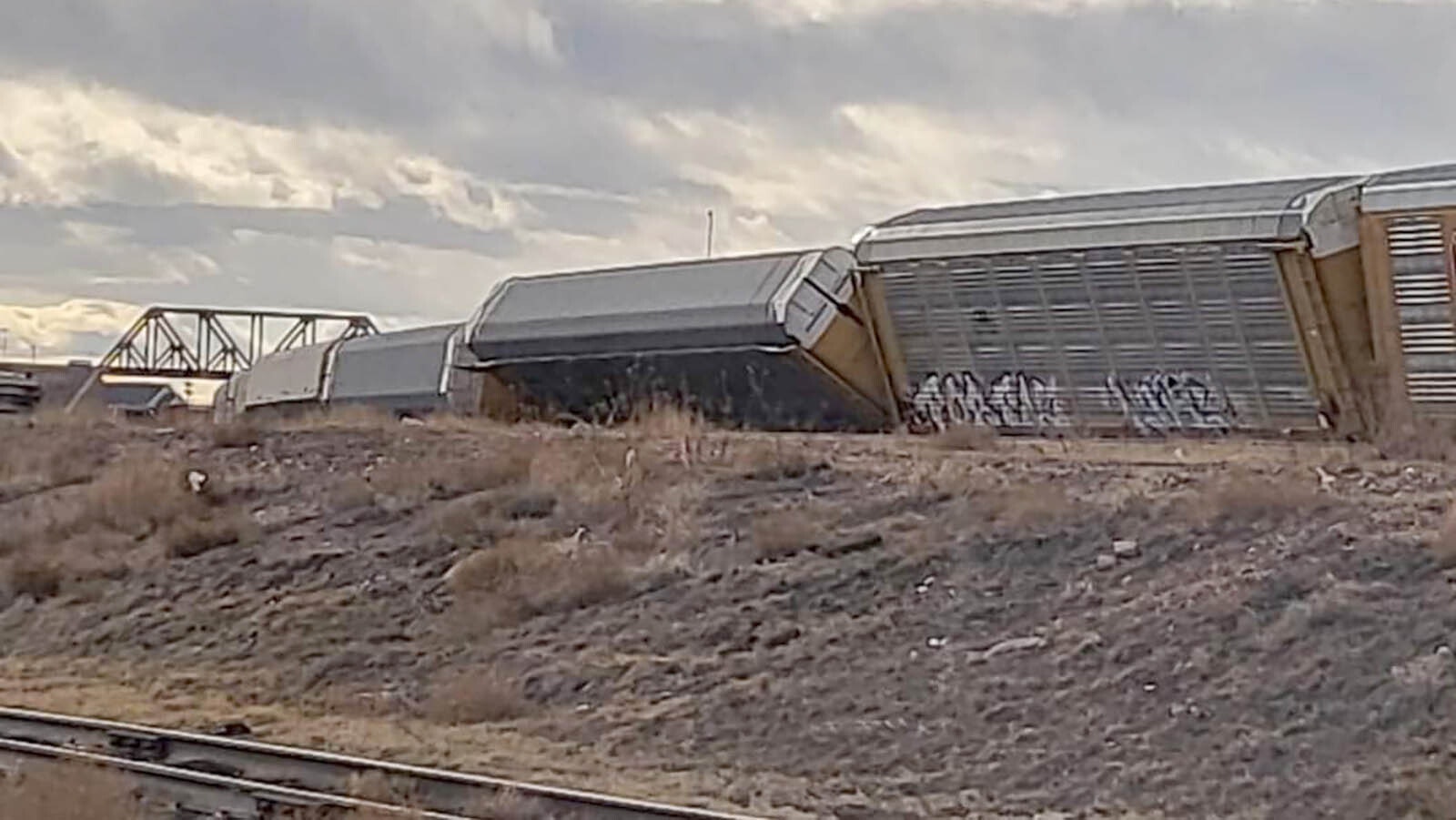By Leo Wolfson, Cowboy State Daily
Leo@CowboStateDaily.com
A Monday night train derailment in Cheyenne wasn’t a massive natural disaster, but that doesn’t mean it’s not an noteworthy event.
Union Pacific spokesperson Mike Jaixen told Cowboy State Daily on Tuesday that the 12-car derailment happened near Tyrrell Chevrolet and Cheyenne Livestock and Resting just southwest of downtown Cheyenne at 5 p.m. The derailment was still being cleaned up Tuesday and the event is under investigation.
Jaixen said there were no hazardous materials released as a result of the crash. A photo from the derailment shows a handful of covered cars tipped over, but no visible materials spilling out from them.
“There were no injuries or releases, and no hazmat was involved,” Jaixen said.
Trains typically pass through Cheyenne at a slow rate but travel through other Wyoming towns like Laramie and Rock Springs more quickly.
Stan Blake, a former legislator and longtime conductor for Union Pacific, said the derailment should be a cause of concern for an industry that has been in the focus of national news lately for a series of mishaps, including more than a dozen derailments.
Based on the photo of the derailment, Blake told Cowboy State Daily he doesn’t believe the train was moving at a high rate of speed when it derailed. But he also said that shouldn’t take away from the serious nature of the crash.
“What if hazardous waste had spilled out right outside downtown Cheyenne?” he asked.
Bad Optics
Train derailments are a sensitive topic in the United States of late because of a massive February derailment in East Palestine, Ohio.
In that crash, 38 Norfolk Southern freight cars carrying hazardous materials came off the tracks, causing a massive fire in its wake. Residents of the surrounding communities had to be evacuated and more than 43,000 animals were estimated to have died as a result of 100,000 gallons of hazardous materials spilled.
Blake said cuts the railroad industry has made to its workforce has had a corollary effect on the rate of inspections and that derailments usually happen as a result of one of three reasons.
• Human error
• Track condition
• Train issues
Blake said unless there’s a major derailment or a chemical spill, the event usually doesn’t have to be reported publicly.
He said he remembers derailments in Wind River Canyon and Glendo State Park and that he was even involved in a few small ones himself, but nothing at a high speed.
“You come to an abrupt halt,” he said of the experience.





